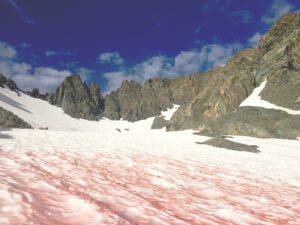A well-insulated pad is a critical piece of gear for winter camping. How should you choose the right sleeping pad for your winter camping adventures? Read on for advice about the best sleeping pads for cold weather.
Sleeping pads are essential because they provide both cushioning and insulation. Although snow may provide an element of natural cushioning that’s not present in warmer temperatures, insulation is all the more important in winter. Your body can very easily lose heat to the ground in cold temperatures. Plus, if your pad isn’t well insulated, your sleeping bag will not perform to its temperature rating.
Insulation is measured in R-value, a standardized system. The system works roughly as follows:
- R-value 2 and under: very little insulation, so only appropriate for warm weather use (or as supplemental insulation)
- R-value 2- 4: generally good for three-season camping, down to about freezing
- R-value 5 and up: designed for very cold conditions or particularly cold sleepers
Depending on how cold it is in your locale, you’ll probably want a pad with an R-value above 4 or 5 for winter camping. An alternative strategy is to use two separate pads with a lower R-value.
Of course, insulation isn’t the only feature to consider in a pad. The features important to you may depend on whether you’re car camping or backpacking, and also whether you’re a side sleeper, a cold sleeper, or a sleeper who craves extra comfort. Here are some of the major features to consider:
- Length: In general, longer pads are more comfortable, but length also adds to weight and bulk. Taller folks may want 76-inch pad, while shorter campers may be content with a 66-inch pad.
- Width: If you’re relatively large or want extra comfort, you can choose an extra-wide model.
- Shape: Single pads may come in mummy or rectangular shapes or variations. Rectangular shapes add to comfort but also to weight.
- Women’s specific: Women’s-specific models are often wider at the hip area and narrower at the shoulders. Because women tend to sleep colder, these pads may have extra padding for your torso and feet as well as higher R-values.
- Weight: Ultralight air pads and foam pads can weigh less than a pound, but most pads weigh more. Weight is key for backpackers, but car campers can disregard this variable.
- Packed size: Some pads pack down extremely small—even to the size of a can of soup. Again, this is important for backpackers but not for car campers.
- Noise: Air pads, in particular, can make distracting crinkling noises, especially when new.
- Material: Textured or brushed fabrics are less slippery than nylon, helping you stay put at night. Higher denier, such as 50+, leads to better durability—useful if you’re camping with a dog!
- Ease of use: Self-inflating pads tend to be easy to use because they partly fill on their own once you open the valve. Dual valves are speedier than a single-valve style, and one-way valves also promote ease of use. Easy-to-use pads are especially important in cold temperatures when your hands may be numb.
- Warranty: You may want think about how good a pad’s warranty is if you’re buying a type of pad more prone to damage, such as an air pad.
There are four main types of pads designed for camping (though car campers can always improvise with other forms of cushioning from home).
Air pads are comfy, lightweight, and compact, though many of them don’t provide great insulation. Air pads must be packed carefully to avoid damage. Because air pads are more prone to punctures than other kinds of pads, it’s critical to bring a patch kit (which pads usually come with). The Therm-a-Rest NeoAir Xtherm is an excellent option for cold temperatures, boasting an R-value of 6.9. Another good choice for the winter (though not for extreme cold) is the Therm-a-Rest NeoAir XLite (R-value: 4.2). It’s available in a slightly toastier women’s model (R-value: 5.4). Also check out the Exped MegaMat Lite 12 (R-value: 5.2). In super-cold temperatures, you may want to supplement your insulation by placing a closed-cell foam pad under your air pad.
Self-inflating pads are sort of a cross between an air pad and closed-cell foam pad. They’re somewhat bulky and heavy compared to many air pads. They’re relatively easy to use because once you open the valve they mostly self-inflate, and then you blow a little extra air in. Try the REI Co-op Camp Dreamer XL Self-Inflating Deluxe Bed (R-value: 6.6), the Nemo Roamer (R-value: 6), or the REI Co-op Camp Bed Self-Inflating Sleeping Pad (R-value: 7.6).
Closed-cell foam pads do not inflate but rather are made up of super-dense foam with miniscule closed air cells. Though these pads are lightweight, relatively cheap, and durable, they don’t have enough insulation to use alone in cold temperatures. But they can be placed under other pads to boost comfort and insulation. Great options include the Therm-a-Rest Z Lite Sol (R-value: 2.0) and the Nemo Switchback (R-value: 2.0).
Sleeping pads for car camping is our super-technical name for pads that are heavy and bulky and that have camping-friendly features (unlike the air mattress you may keep in your closet for houseguests). Some of these pads come in double sizes. Good winter options include the Exped MegaMat Max 15 Duo Sleeping Pad (R-value: 10.6) and the Exped MegaMat Duo 10 (R-value: 8.1).







